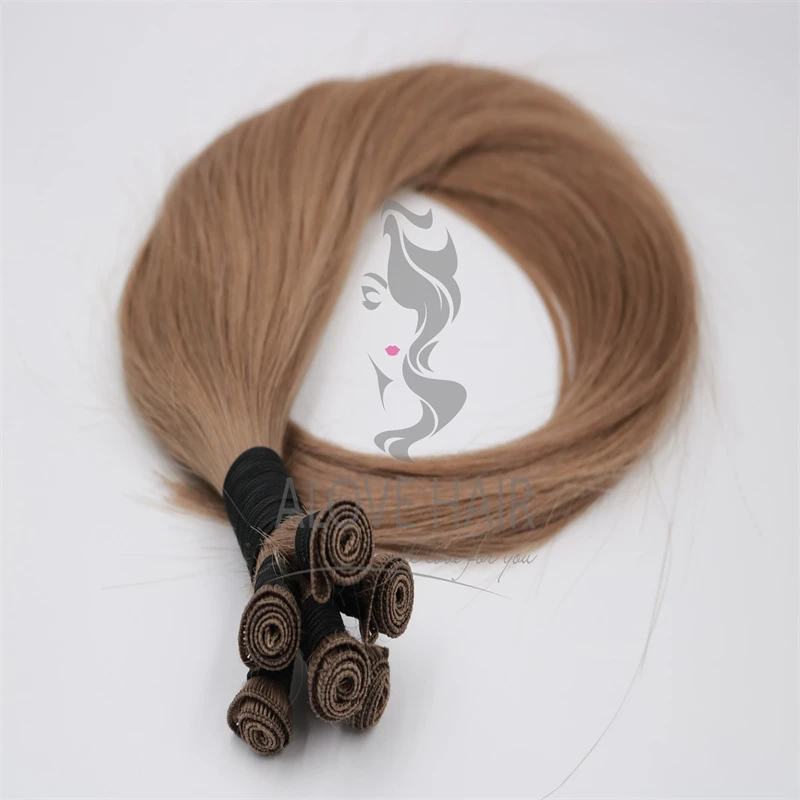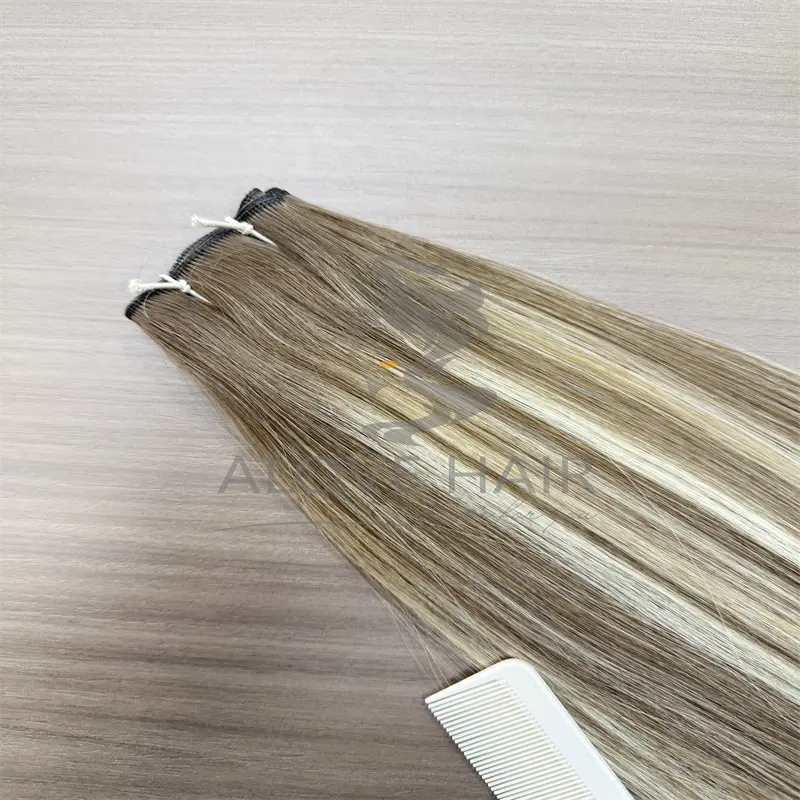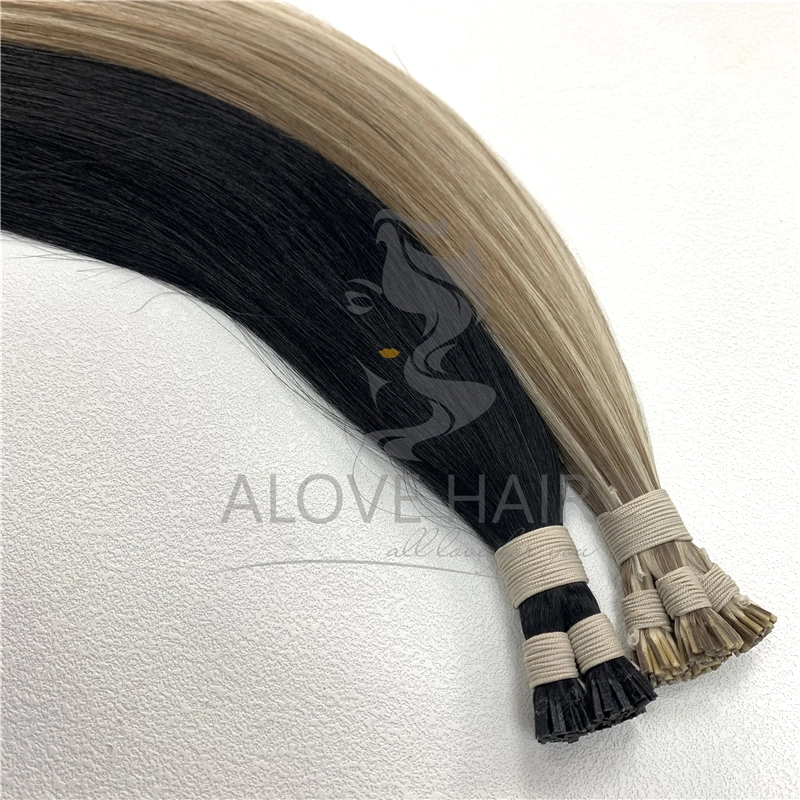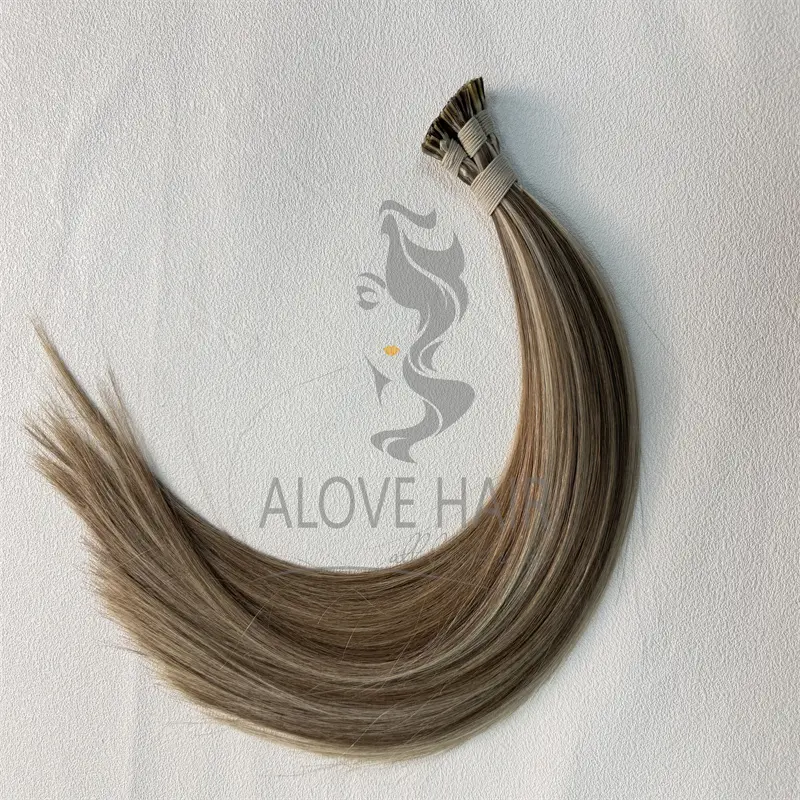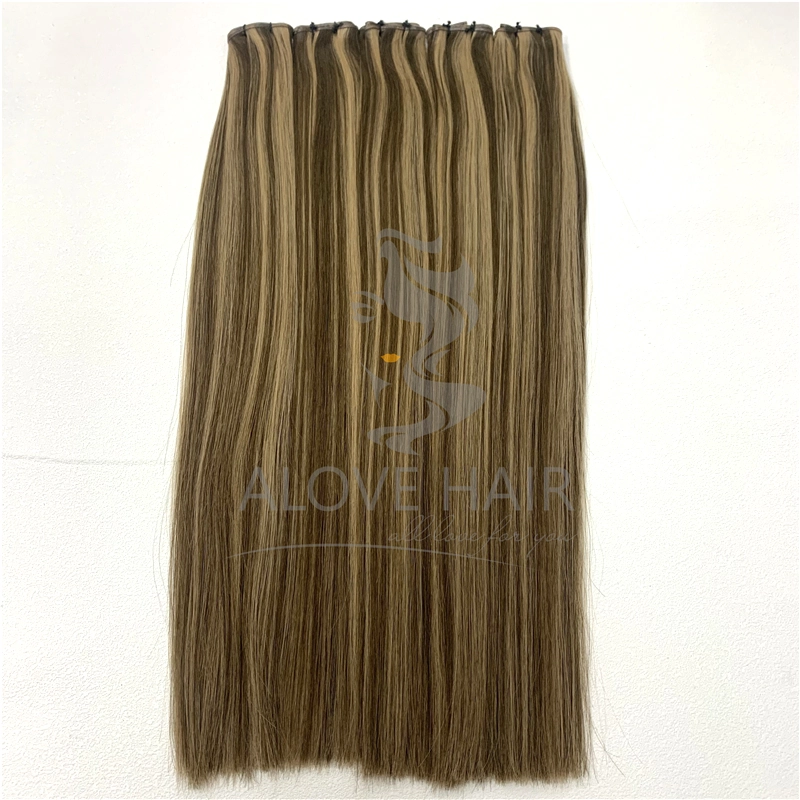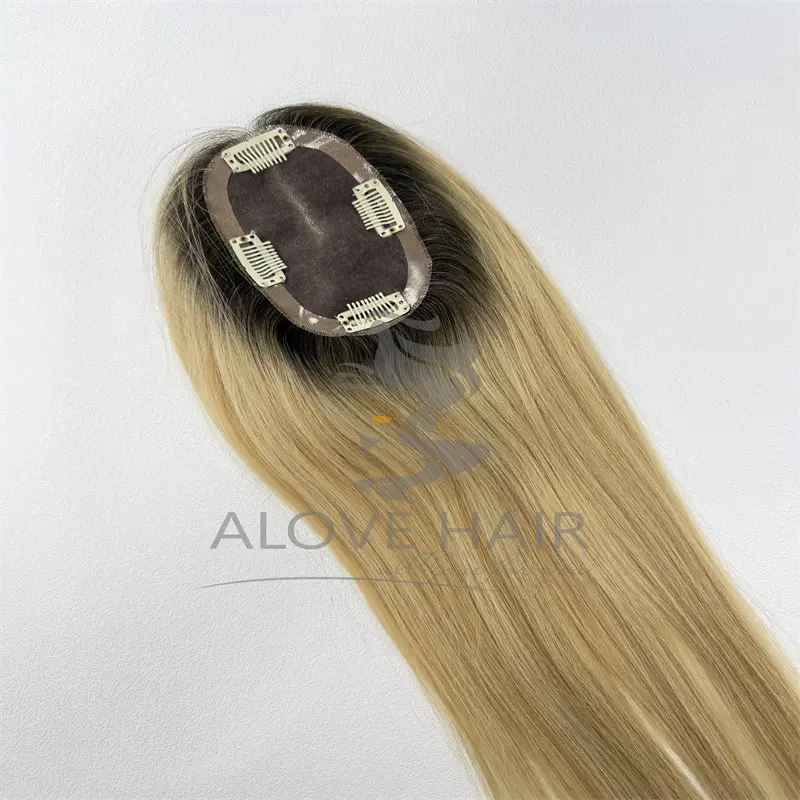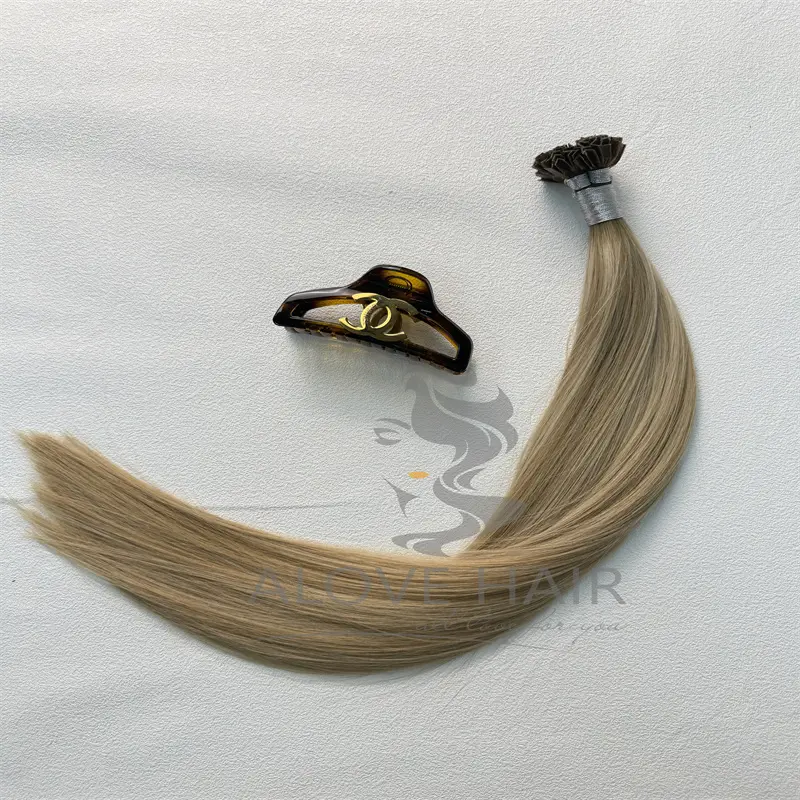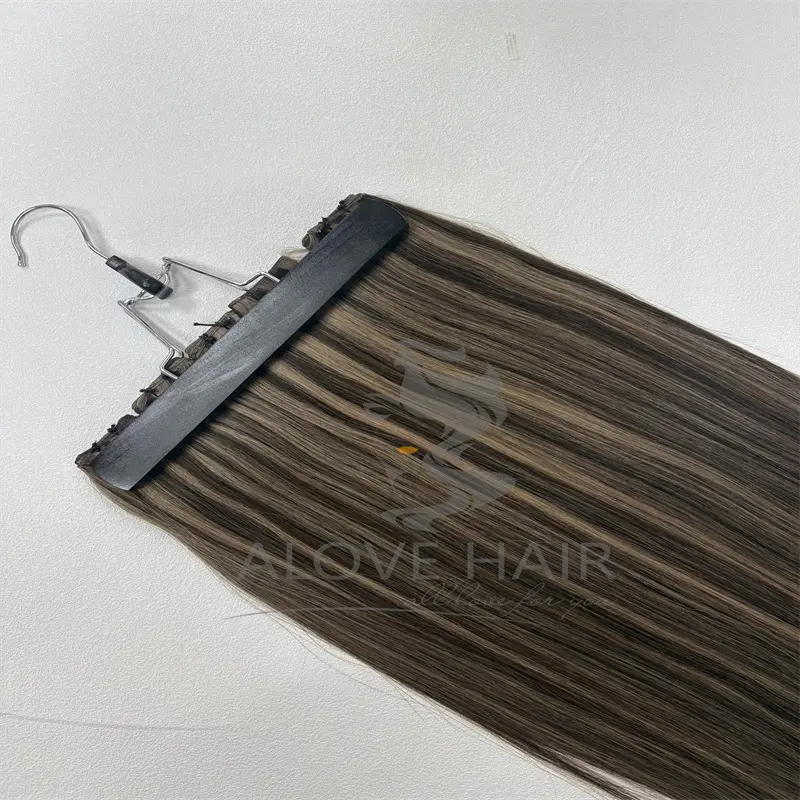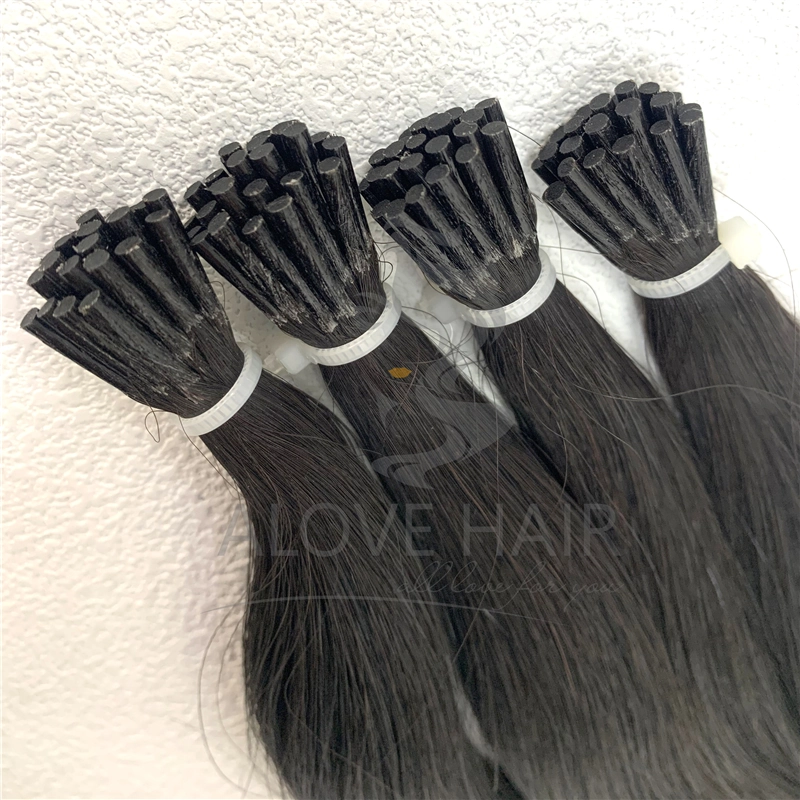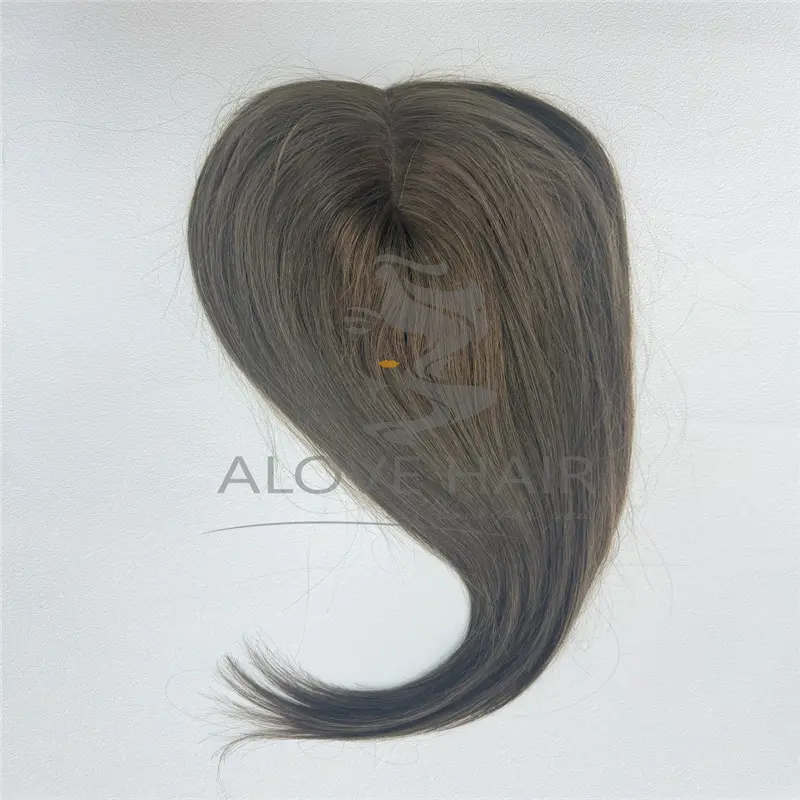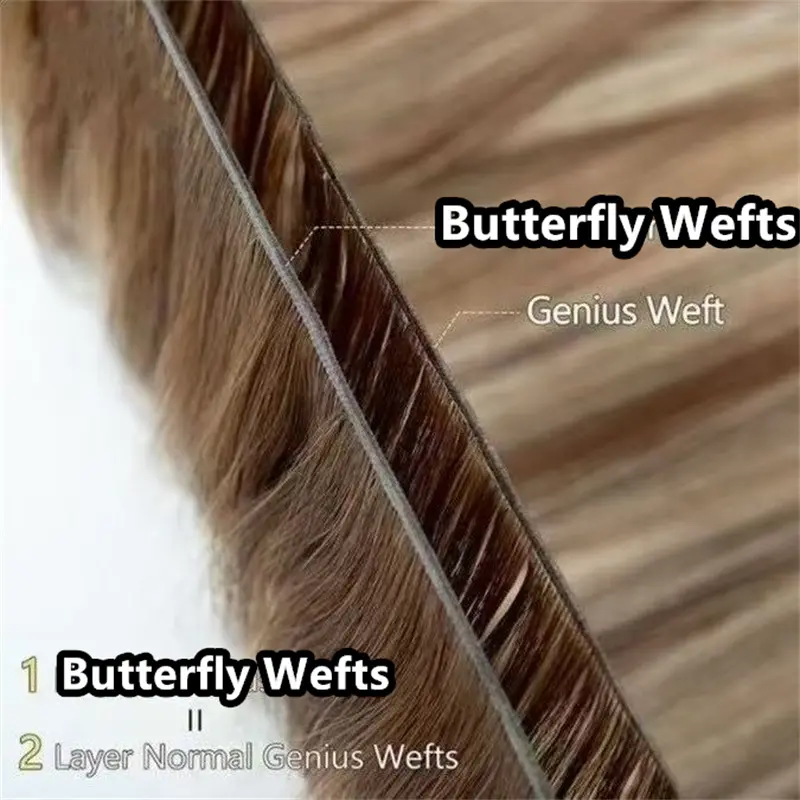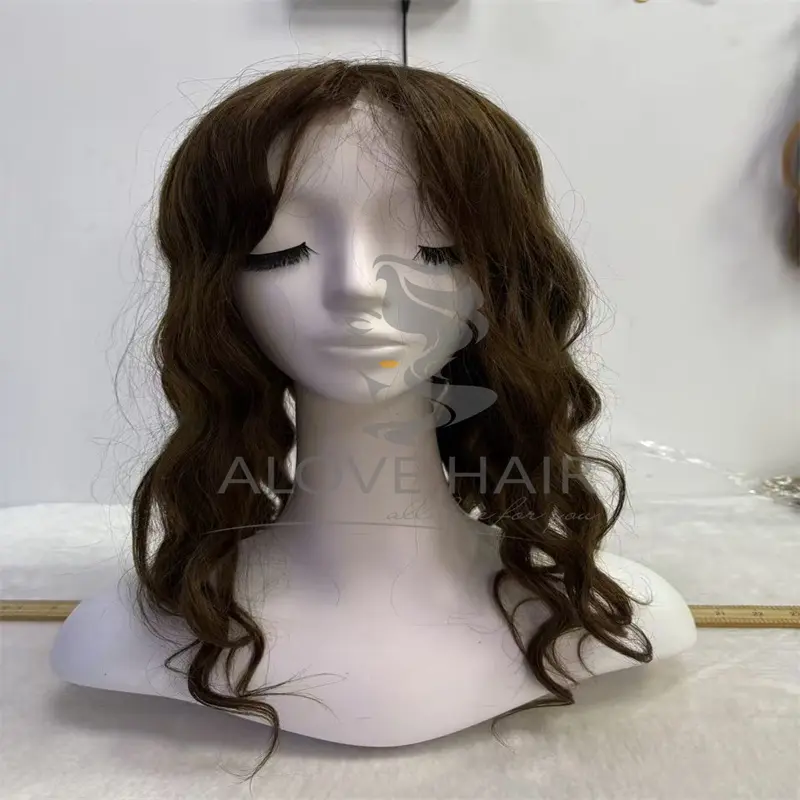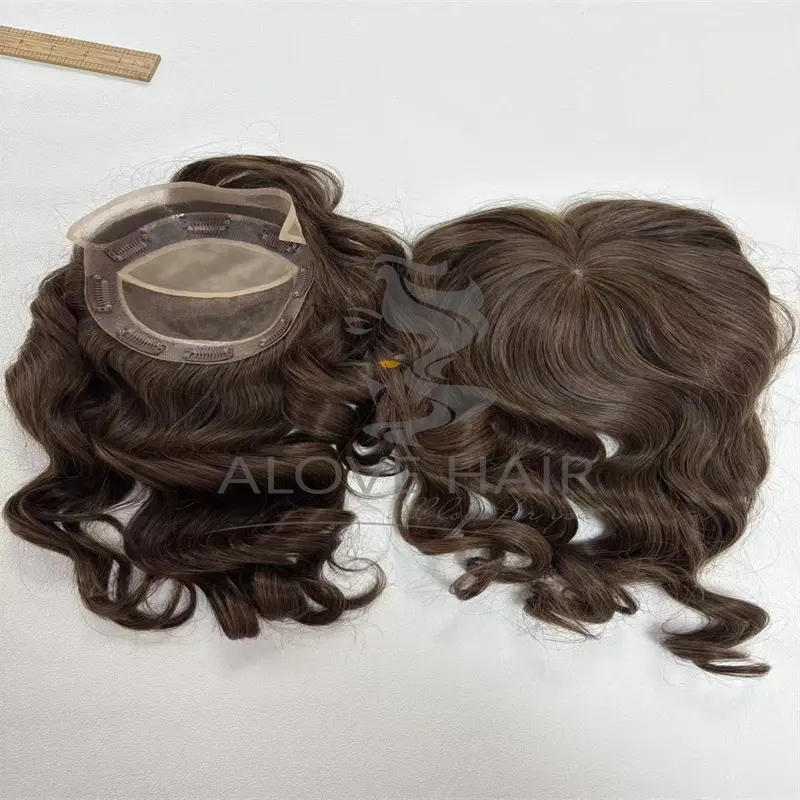Hair extensions have become increasingly popular in recent years, with different types of extensions available to meet different needs. Two popular options are hand-tied weft extensions and sew-in extensions. While they may seem similar, there are significant differences between the two methods. In this article, we'll explore the differences between hand-tied weft extensions and sew-in extensions to help you make an informed decision about which method is right for you.
What are hand-tied weft extensions?
Hand-tied weft extensions are made by hand and are much thinner and more flexible than sew-in extensions. They consist of a thin weft of hair that is attached to the natural hair using a beaded technique. The weft is attached to the hair by threading a small section of natural hair through a bead, then attaching the weft to the bead using a thread. This technique is repeated across the head until the desired amount of hair has been added.
What are sew-in extensions?
Sew-in extensions, also known as weaves, are created by braiding the natural hair into a cornrow pattern and then sewing a weft of hair onto the braids using a needle and thread. This technique can be done using either a partial or full head weave, and can be removed by simply cutting the thread and removing the weft.
What are the differences between the two methods?
One of the biggest differences between hand-tied weft extensions and sew-in extensions is the way they are attached to the natural hair. Hand-tied weft extensions use a beaded technique that is much gentler on the hair than sew-in extensions, which can be quite tight and cause tension on the scalp. Additionally, hand-tied weft extensions are much thinner and more flexible than sew-in extensions, making them more comfortable to wear and easier to style.
Another difference between the two methods is the amount of hair that is used. Hand-tied weft extensions typically use less hair than sew-in extensions, which can be a benefit for those with finer hair or those who want a more natural look. However, sew-in extensions can provide more volume and fullness than hand-tied weft extensions, making them a better choice for those with thicker hair.
Finally, the maintenance of the two methods is also different. Hand-tied weft extensions require more frequent maintenance appointments, typically every 6-8 weeks, while sew-in extensions can last up to 12 weeks with proper care. Additionally, hand-tied weft extensions can be easier to care for at home, while sew-in extensions require more careful washing and styling to prevent damage to the natural hair and the extensions.
In conclusion, both hand-tied weft extensions and sew-in extensions have their own unique benefits and drawbacks. It's important to consider your own hair type, lifestyle, and styling preferences when choosing which method to use. Consult with a professional stylist to determine which method is best suited for your needs and to ensure proper installation and maintenance. With the right care, both types of extensions can help you achieve the long, voluminous hair you've always wanted.
Hand-tied weft extensions and sew-in extensions are both methods used to attach hair extensions to natural hair. They have some similarities but also distinct differences:
Attachment Method:
Hand-Tied Weft Extensions: These extensions consist of wefts (strips) of hair that have been hand-tied. They are typically thinner and flatter than machine-sewn wefts. Hand-tied wefts are applied using various methods, including beading, braiding, or using micro-links. They are attached closer to the scalp, providing a more natural and less bulky appearance.
Sew-In Extensions: Sew-in extensions involve braiding the natural hair into cornrows and then sewing the wefts of hair onto the braids using a needle and thread. This method provides a secure attachment and can support heavier hair extensions.
Thickness and Comfort:
Hand-Tied Weft Extensions: These extensions are generally thinner and lighter, making them more comfortable to wear and reducing the risk of strain on the natural hair. They also lie flatter against the scalp, making them less noticeable.
Sew-In Extensions: Sew-in extensions might be slightly thicker due to the braiding and sewing process. While they provide a secure attachment, they can sometimes feel heavier and tighter on the scalp, which could potentially lead to discomfort, especially if not installed correctly.
Durability:
Hand-Tied Weft Extensions: The attachment methods used with hand-tied wefts can vary, affecting their durability. When properly applied and cared for, they can last several weeks to a few months. They might need more frequent maintenance due to their delicate nature.
Sew-In Extensions: Sew-in extensions are known for their longevity. With proper installation and care, they can last longer than hand-tied weft extensions. However, the tight braiding and weight of the wefts can sometimes cause tension on the natural hair, potentially leading to damage if not managed well.
Versatility:
Hand-Tied Weft Extensions: These extensions are versatile and can be applied in various ways, allowing for more flexibility in styling. They are ideal for individuals looking for a more natural appearance and lightweight feel.
Sew-In Extensions: Sew-in extensions can also be versatile, but they might be bulkier and limit certain hairstyles due to the way they are attached. However, they are still suitable for various styling options.
Both methods have their pros and cons, and the choice between hand-tied weft extensions and sew-in extensions will depend on factors such as the desired look, hair type, lifestyle, and comfort preferences. It's crucial to have extensions applied by a professional who can assess your hair and recommend the best method for your needs.
FAQ
Q: What are hand-tied weft extensions?
A: Hand-tied weft extensions are thin strips of hair that have been delicately hand-tied together. They are applied using methods like beading, braiding, or micro-links, creating a natural and lightweight look.
Q: What are sew-in extensions?
A: Sew-in extensions involve braiding the natural hair into cornrows and then sewing wefts of hair onto the braids using a needle and thread. This method provides secure attachment and support, though it can sometimes be bulkier.
Q: Which method is more comfortable to wear?
A: Hand-tied weft extensions tend to be more comfortable due to their lightweight nature and flatter attachment. Sew-in extensions might feel heavier and tighter on the scalp, which can lead to discomfort if not installed correctly.
Q: Are hand-tied weft extensions or sew-in extensions thicker?
A: Hand-tied weft extensions are thinner and lie flatter against the scalp. Sew-in extensions can be slightly thicker due to the braiding and sewing process.
Q: Which method is more durable?
A: Sew-in extensions are generally more durable than hand-tied weft extensions. With proper care, sew-in extensions can last longer due to their secure attachment.
Q: Can I style my hair as usual with both methods?
A: Hand-tied weft extensions allow for more versatile styling as they are less bulky and more flexible. Sew-in extensions can also be styled in various ways but might have limitations due to the way they are attached.
Q: How long do these extensions typically last?
A: Hand-tied weft extensions can last several weeks to a few months, depending on the attachment method and care. Sew-in extensions can last longer with proper installation and maintenance.
Q: Which method is better for a natural look?
A: Hand-tied weft extensions provide a more natural appearance due to their flat attachment and lightweight feel. Sew-in extensions can still look natural but might be slightly bulkier.
Q: Do these methods work for all hair types?
A: Both methods can work for various hair types, but it's important to consult a professional to determine the best method based on your hair's texture, thickness, and condition.
Q: How important is professional application?
A: Professional application is crucial for both methods to ensure proper attachment, prevent damage, and achieve the desired look. DIY application can lead to issues like discomfort and hair damage.
Remember that everyone's hair is unique, so what works best for one person might not be the same for another. Consulting with a hair extension professional is recommended to determine which method suits your hair type, lifestyle, and preferences.
